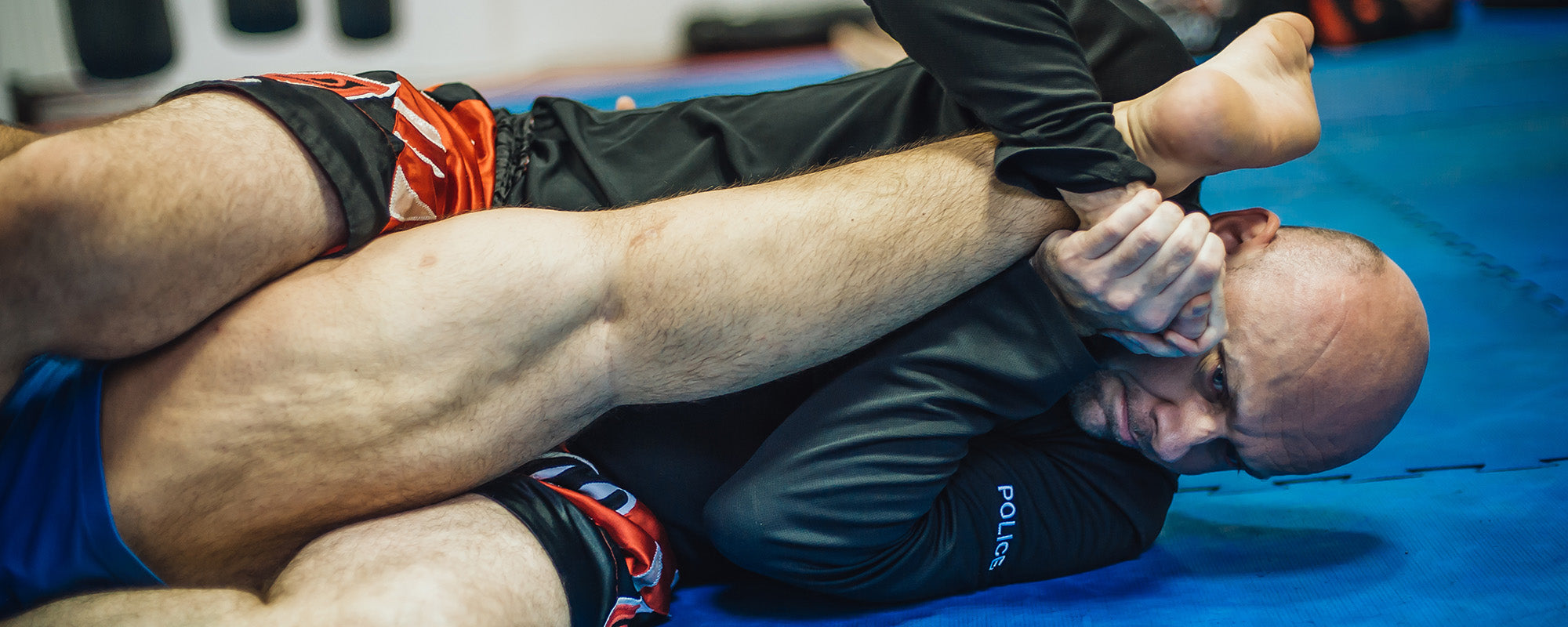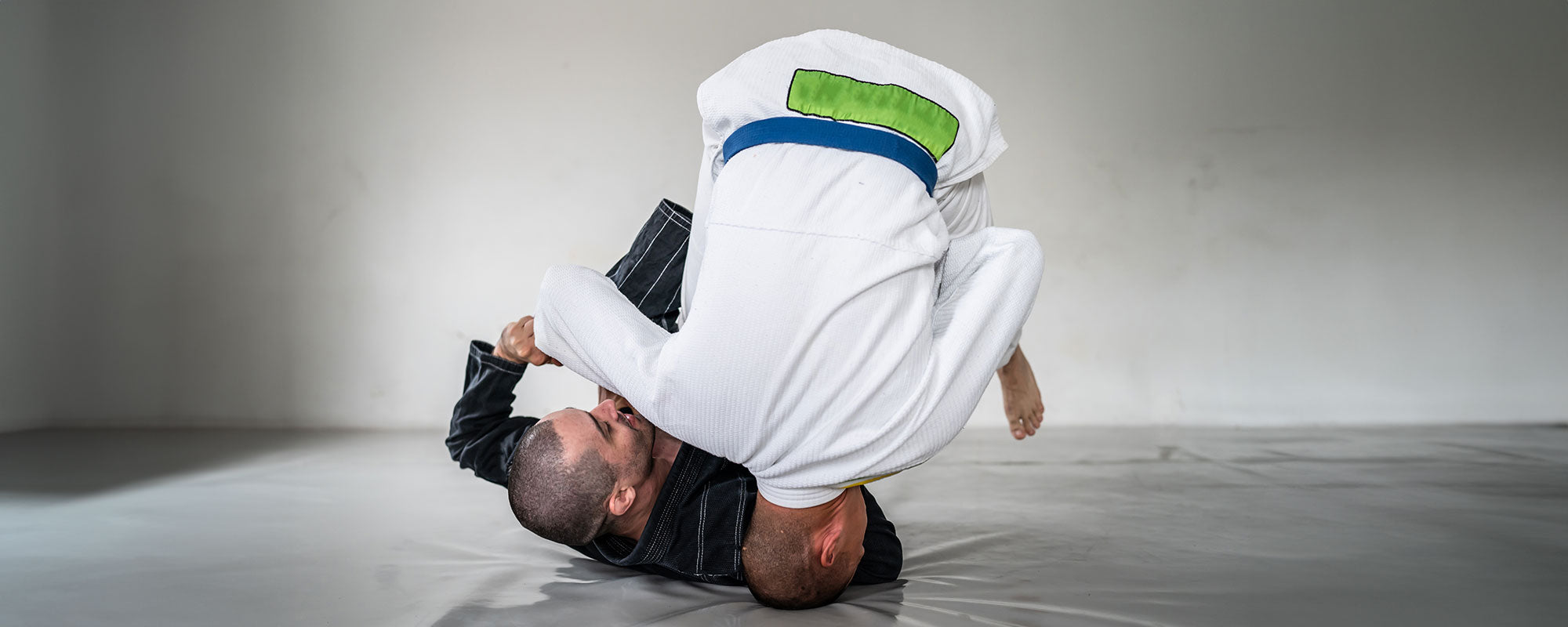The versatile art of Brazilian jiu-jitsu works on angles, leverage, and maintaining the pressure to submit to the opponent. The various submissions work on comparatively different dynamics. The fighter uses comparatively different techniques defensively and offensively.
The Americana and Kimura locks are effective submission methods. Both are joint locks with slightly different implications; the change in the direction of execution has changed their effectiveness. In this article, we are going to find out the differences and effectiveness of the two submission methods, Americana Lock and Kimura.
The fighters of the modern era tend to focus on and implement the double-attack technique to render the contender. Combining attacks is required to take the dominant position.
Table of content
1. BJJ Kimura Submission
The four-figure lock is famous for its various names, also known as the chicken wing, gyaku ude-garami, and double wrist lock. It is the versatile and most effective move that has been part of the various martial arts.
This BJJ submission is a joint lock that targets the shoulder. It is the most effective method, but it is also considered dangerous. Kimura has the highest risk of injury, and it is the reverse of the Americana method.
It works on the fundamental grips of the wrist, elbow, and shoulder lock, and the leverage is created by creating an L shape that practically rotates downward towards the hips or bottom position.
It is the method that works by taking control of the arm by isolating it. The fighter can take control over the opponent by using the following positions:
- Mount
- Guard
- Half guard
- North-south
- Side control
- Closed guard
- Back mount
1.1. Origin of BJJ Kimura Submission
The submission lock has been in martial arts since the fourteenth century; with its evolution, it became part of catch wrestling in the early eighteenth century. The technique of kimura was practiced by the catch wrestler Masahiko Kimura.
It originated in Japan, where it was practiced by two athletes, Masahiko Kimura and Count Koma Maeda. Later, this submission was named Kimura after the person who won the bout with Helio Gracie.
This tournament has gained its height and was famous for the submission method used by Masahiko Kimura, known as Kimuriana. With the passage of time, as the technique became widely famous and used by most grapplers, the BJJ technique was termed kimura only. This method is now commonly used in BJJ bouts and MMA tournaments.
1.2. Execution of BJJ Kimura Lock
To begin applying the kimura lock, the fighter needs to take any required position of the mount, closed guard, half guard, and back control.
Isolate the arm and get control over it with one of your arms. Hold the hand with the wrist with the grip of the four fingers. It is the most distinguished part that is applied in the kimura lock.
To create leverage, the fighter needs to hold their hand with the four-finger grip wrapped around the wrist of the fighter.
Pull the opponent’s arm and keep it at the front. If the angles are not created with the proper care and attention, then there will be difficulty in the execution of the kimura lock. Or there will be the possibility of the opponent escaping.

Ensure there is no or less space between the opponent so there will be no chance to escape. Take the arm in the down position, whereas the elbow of the opponent is right in front of your face.
As the arm is locked in position, you need to control the opponent's body by applying pressure over the three main points: the wrist, elbow, and shoulder joints.
Swift movement is required to apply pressure over the three joint locks, as the pressure is created with the two hands upon one. The pain is unbearable, and the opponent submits instantly.
2. BJJ Americana Submission

The Americana is a BJJ submission known by various names, including keylock, four-finger armlock, bent arm, and top wrist lock. This shoulder lock is used in various martial arts, including judo.
It is the fundamental move that works on the principle of applying the leverage with a 90-degree angle. It tends to isolate the arm, and the forehand stays towards the ceiling. This technique creates intense pain that lets the opponent submit at once.
The rotational pressure is applied to the targeted bones where the wrist of the fighter is in the grip of the two hands. The arm is bent, creating the “L” shape.
2.1. History of BJJ Americana Submission
The bent armlock is a submission method that originated at the beginning of the twentieth century. Japanese judokas or catch-wrestling fighters developed it. As the art of Brazilian jiu-jitsu borrowed many techniques, there was a great revolution in BJJ tactics with time.
Americana became part of jiu-jitsu in the late twentieth century. Two prominent BJJ practitioners, Rolls Gracie, and Bob Anderson, initially introduced the submission technique of Americana lock.
2.2. Application of BJJ Americana Lock
Americana lock comes in various variations, providing the highest percentage for the fighters. It can be applied to the following positions:
- Mount
- Side mount
- Closed guard
- Half guard
- Bottom position
The Americana lock is achieved while controlling one of the opponent's arms. It also provides the maximum percentage as the kimura lock. It can be applied to the five different positions.
The most basic position is side control, which also provides excellent results. The first step involves pining the opponent in place after taking control of the opposite arm of the fellow fighter.
In the jiu jitsu Americana lock, the fighter isolates the arm by keeping it on the mat at the length of the face. The tip is to keep the forearm at the side of the face so there is less or no space. This also helps restrict the opponent's movement to the other or the same side.
The palm will face upwards. The four fingers are placed on the same side, while the thumb is on the other side of the wrist.
Hold your elbow position at the side of the ear. This will help you execute the Americana lock properly. Pressure plays a significant role in the execution of any submission.
The next step is to maintain the space under the opponent's elbow; this will help you drag or slide the arm inside the entangled hand.
Move the hand slightly upward and slide the arm to get the four-finger grip over your hand. This is also known as the double lock method.
Finish the bjj Americana lock by applying pressure to the arm after moving it upward. The arm is in an L shape, with the palm facing upward and the forearm directed toward the opponent's face.
The exerted pressure will not let the opponent stay in the game. The torque created increases the pain in the arm, which allows the fighter to get a tap from a fellow fighter.
3. Difference Between BJJ Americana and BJJ Kimura

It is the submission technique used in Brazilian jiu-jitsu and catch wrestling and is also part of judo. Some people often consider these two techniques similar and seem to be the same at first because of the same ideology of holding the three joints. However, their effectiveness and execution differ slightly.
The kimura and the Americana lock are significantly different submissions in BJJ that work on the same function of four four-finger locks. It is applied to the shoulder joint after creating massive pressure over the joint lock.
Both of the submission methods target the same joints that are:
- Wrist
- Elbow
- Shoulder
The difference is in the gripping direction of the forearm and wrist. If the direction of the forearm is pointing at the upward direction, it is the Americana lock , whereas if the forearm is in the downward direction, it is the Kimura lock.
Both methods involve twisting the arms; one technique is on the front side, while the other involves the twist motion on the backside. The Americana lock is applied while keeping the arm at the front or the side of the opponent's face. The palm faces the ceiling, and the locks of the two hands are created over the one. This makes the two-to-one ratio. Let us find out the difference between the two joint locks.
3.1.First Indicator: The Placement of the Hand
The hand position plays a significant role in the Americana and kimura locks. If the hand is placed upward and the palm faces the ceiling, it is the Americana lock.
When the arm is directed toward the down position and the hand is facing downward, it is the kimura lock.
3.2. Position for Execution
It is commonly seen that the kimura lock is applied from the bottom position, which allows the hand to move backward. The fighter can easily move the palm downward.
Conversely, the Americana is most commonly applied from the top position, where the fighter puts the hand on the mat to apply the rest of the steps.
Note that the Americana lock has variations in which the fighter can apply the submission even from the bottom position. Those are closed guard and Americana from the bottom.
3.3. The Rotation
Both submissions work on wrist rotation, which directly impacts the arm. In Americana BJJ lock, the rotation is limited to the extent of rotation with the movement of the elbow, and the restriction in the wrist creates a painful impact.
If we talk about the kimura lock, the rotation is comparatively more in the backward direction, which creates intense pain in the shoulder joint. In kimura, the movement is unlimited, and the opponent can bend the arm until he gets the tap.
The rotation power or limit in kimura is higher than that of the Americana lock.
3.4. Pressure Application
Both submissions differ as the fighter applies pressure on the joint lock. In the Americana, the pressure is applied by lifting the elbow in the upward position and creating pressure over the wrist slightly in the downward position.
In kimura, the hand or the wrist is moved back with the twist that creates intense pressure in three joint locks.
3.5. The Finish
To finish the jiu jitsu kimura submission, pressure is exerted in the backward direction. In Americana, the fighter maintains the pressure by moving the elbow upward and downward.
4. Which BJJ Lock is Better, Americana or Kimura?
In Brazilian jiu-jitsu, the kimura lock and the Americana lock are effective and powerful tools that have their advantages. Both of them are effective ways to submit the opponent instantly. These two techniques came from different origins and became part of the BJJ. These are the submission methods that provide the highest percentage of long-term progression.
Kimura is a more effective method than the Americana lock. It is the bjj submission lock that works by creating pressure after taking the arm in the backward position. It provides the opportunity to rotate the arm in about 360 degrees .
In addition, the kimura lock is a versatile and dynamic move that can be applied from multiple positions, compared to the Americana lock. Lastly, kimura provides the highest percentage to the BJJ practitioner and expert grapplers.
5. Final Words
The art of Brazilian jiu-jitsu has evolved from a versatile sport, adopting many moves from various effective sports. The BJJ submission methods are introduced with variations that have crossed throughout evolution. Modern jiu-jitsu has demonstrated the ultimate changes, where the fighter focuses on learning the tactics that can create the utmost effect on the opponent, with adaptability and evolution.
The submissions of the kimura and the BJJ Americana lock are reverse variations that work on the same principle of locking the shoulder joint along with the elbow and wrist of the opponent. Furthermore, the pressure is increased with the upward, downward, and backward motion of the hand.
The double lock is placed after keeping two hands over one. This way, pressure traps the opponent with the four-finger lock. In short, both jiu-jitsu submissions are equally excellent and successfully submit the opponent.












Leave a comment
This site is protected by hCaptcha and the hCaptcha Privacy Policy and Terms of Service apply.